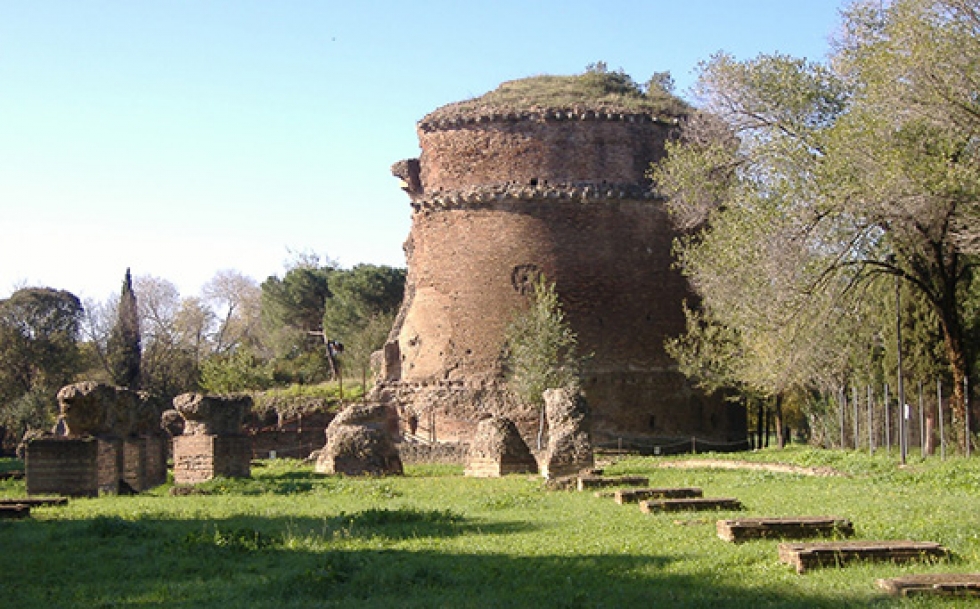Situated at the third Roman mile on via Praenestina, consular street previously called via Gabina, the park is so large (80.000 m2) and important that gives its name to the neighborhood surrounding it, also called Villa Gordiani. In the Villa there are the remains of a patrician (aristocratic) domus from the 3rd century CE that probably belonged to the very powerful Gordiani family, to which 3 Roman emperors belonged. It’s supposed to have been a very beautiful and vast house. Most of it is still buried for conservation reasons, but archaeologists know that it had 3 large libraries, a wonderful portico of 200 columns, immense thermal baths among the most impressive of the empire, and a splendid mausoleum, whose remains are still visible on the surface, that had to be the monumental family grave. Near the mausoleum, the remains of an ancient Christian basilica and of a catacomb were found. It truly is an inexhaustible source of treasures yet to discover. Some important scholars believe the Villa was built before the Gordiani family owned that land. Actually, it is pretty difficult to date the building, since it was remade many times. Many news on the Villa can be found in the Historia Augusta, work of an unknown author on the lives of Roman emperors from the beginning of Hadrian’s empire (117 AD) to Numerian’s death (284 AD), covering a timeframe of about 170 years. In the park there are also remains of a tank, apparently from the 2nd century CE, and of a columbarium (vault for graves) from the end of the 4th century CE. However, the most interesting monument is an enormous nymphaeum. The nymphaeum, not very well preserved, presents an octagonal base. It probably had a majestic round dome, supported by thick walls with small circular openings to let the light in. The most particular characteristic of the monument is that, many centuries after the fall of the Western Roman Empire, in the 1200s, a sighting tower was built inside of the now ruined monument. The Colonna family bought the tower i 1422, fortifying it and turning it into an imposing defensive bastion. Almost 150 years after, it became property of Vincenzo Rossi dello Schiavo, from which the tower takes its contemporary name: Tor de’ Schiavi (Tower of the Schiavo family). Villa Gordiani as public park was born in 1931 and the redelevopment that made it appear as we can see it today was actuated in 1960. It is the ideal for those who love history, but also for those who want to lose themselves in nature, surrounded by holm oaks, maples, pines and elms. It is the perfect place for a quiet day off, but only until sunset. A medieval legend, indeed, says that demonic beings emerge from the underground tunnels at night and walk in the Villa, especially near the mausoleum. Be careful!
Giuseppe Rosselli




